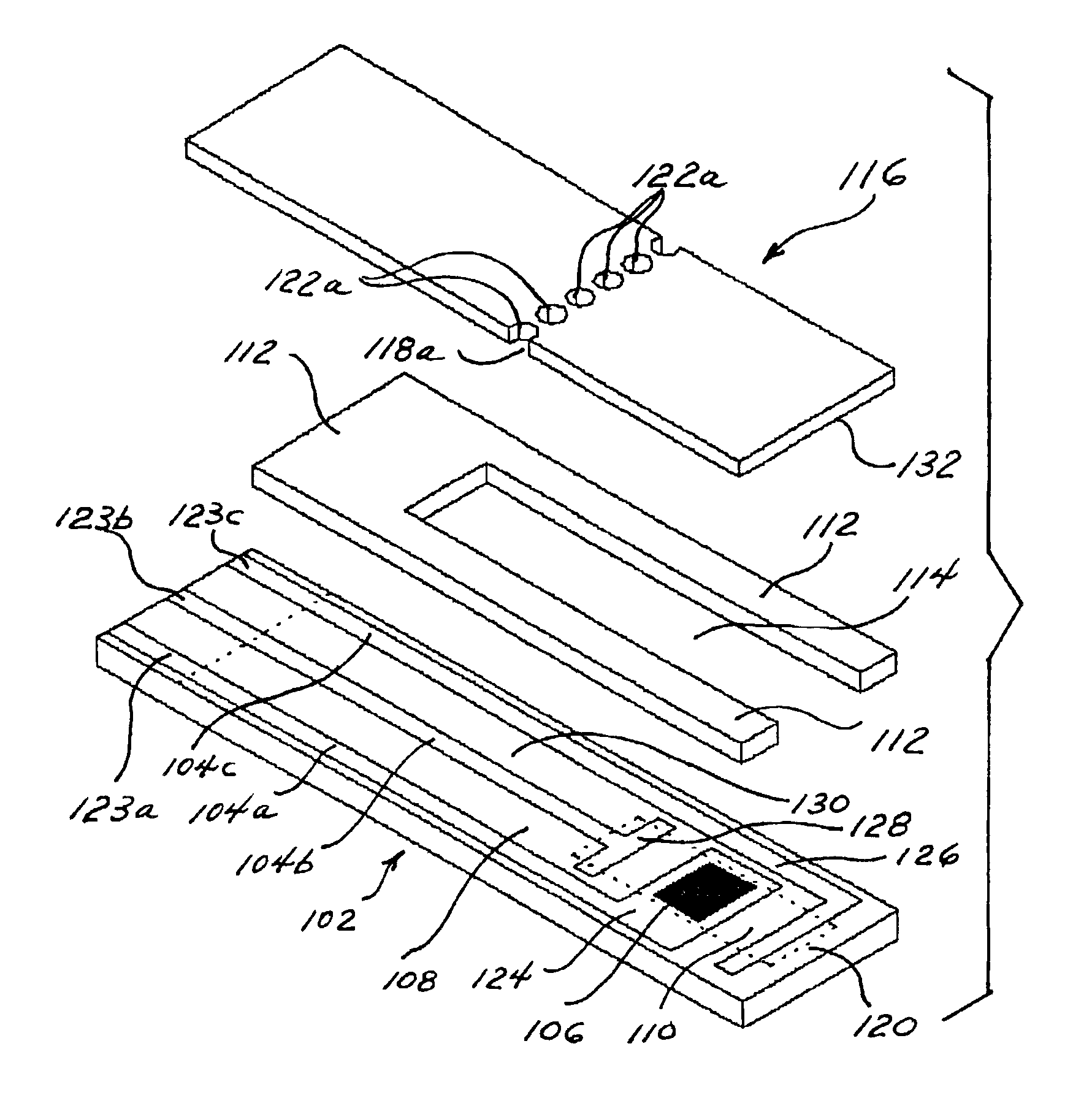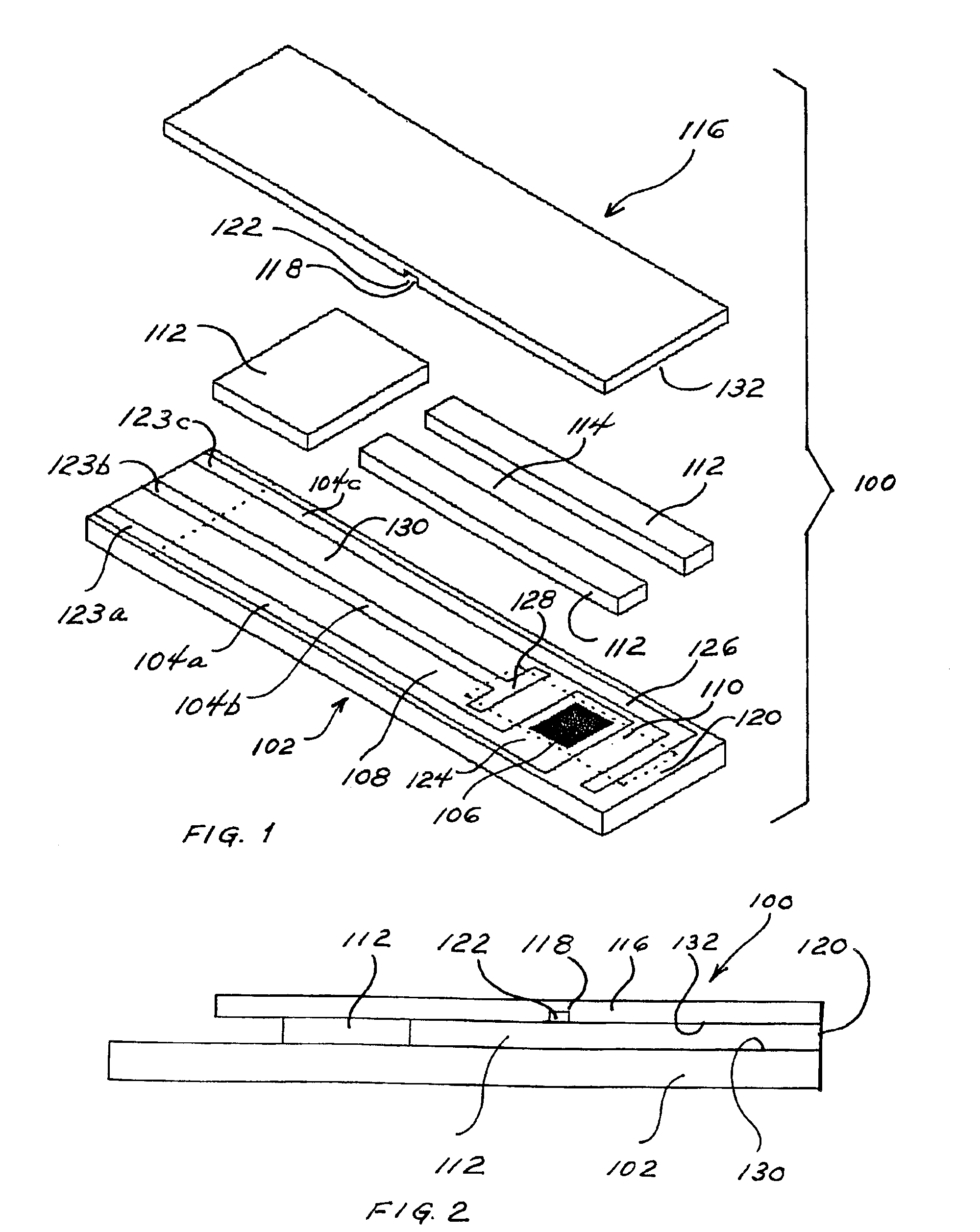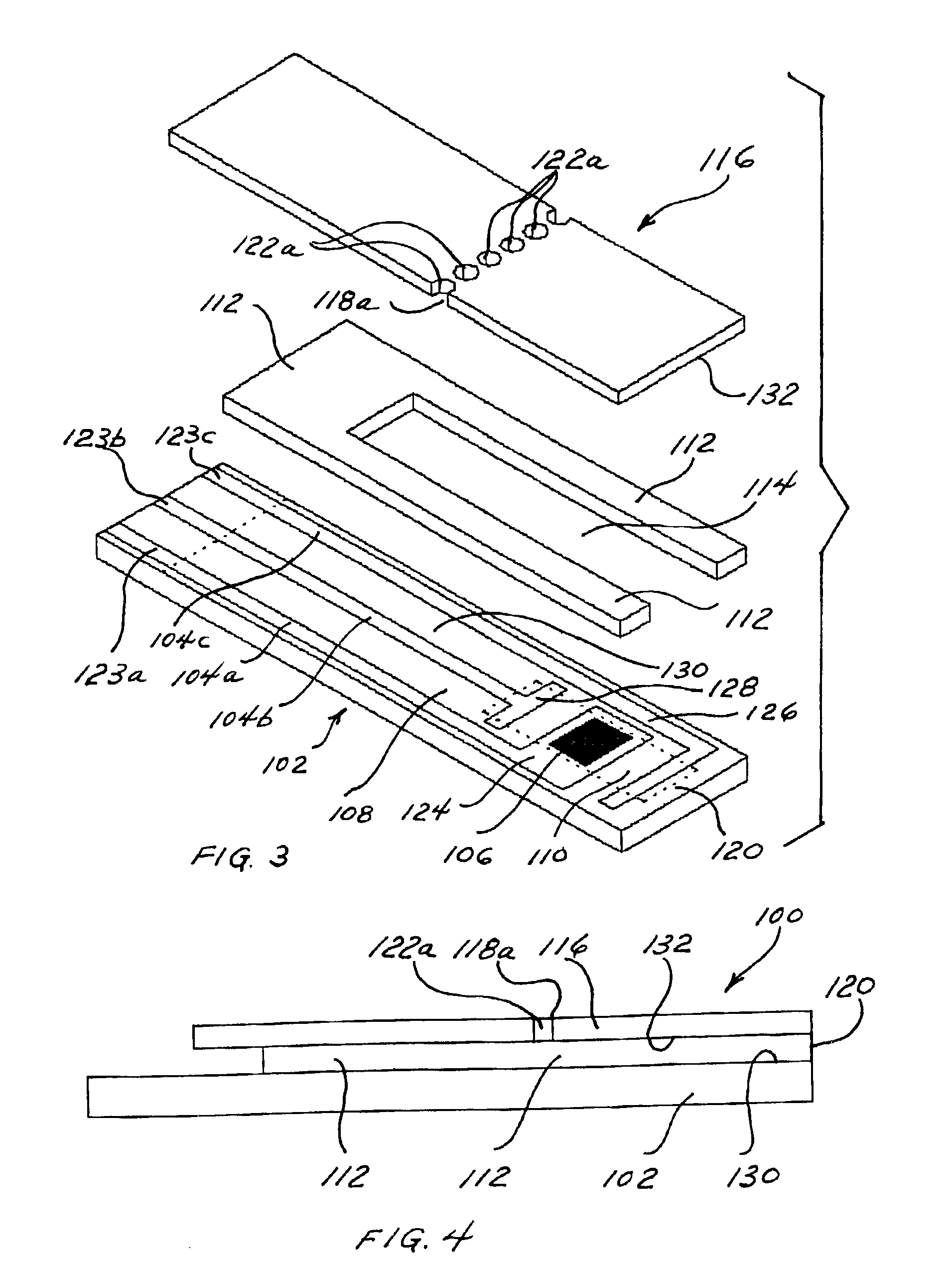Device having a flow channel
a technology of fluid flow and flow channel, which is applied in the direction of enzymology, biological testing, after-treatment of biomass, etc., can solve the problems of time-consuming and laborious steps of applying the mesh layer, and the inability to measure the concentration of analyte in a fluid sample,
- Summary
- Abstract
- Description
- Claims
- Application Information
AI Technical Summary
Benefits of technology
Problems solved by technology
Method used
Image
Examples
example 1
[0079]This example illustrates the preparation of a sensor strip according to this invention. The sensor strip of this example is shown in FIGS. 1 and 2.
[0080]Carbon tracks are applied to a base layer made of poly(vinyl chloride) (PVC) by means of a screen-printing technique. The carbon tracks define the position of the electrodes within the reaction site, which includes the reference electrode, counter / trigger electrode, and working electrode. The counter electrode also functions as a trigger electrode. The assay begins when the sample contacts the trigger electrode. The carbon tracks also define the position of the contacts. An insulation layer can be printed over carbon tracks to expose the defined reaction site. The insulation layer is characterized by having a portion cut therefrom to create electrical contacts that can be inserted into a meter for measuring the reaction of interest. UV-curable adhesive can be printed to form the spacer layer and define the sidewalls of the flo...
example 2
[0083]In this example, the sensor strip of Example 1 is prepared, with the exception that a mixture of silver and silver chloride is printed on the track leading from the working electrode to reduce the resistance along that portion of the track.
example 3
[0084]In this example, the sensor strip of Example 2 is prepared, with the exception that a reagent layer is printed on the working electrode. This optional reaction layer comprises an enzyme, a mediator, an optional binder, and an optional filler.
PUM
| Property | Measurement | Unit |
|---|---|---|
| thickness | aaaaa | aaaaa |
| thickness | aaaaa | aaaaa |
| width | aaaaa | aaaaa |
Abstract
Description
Claims
Application Information
 Login to View More
Login to View More - R&D
- Intellectual Property
- Life Sciences
- Materials
- Tech Scout
- Unparalleled Data Quality
- Higher Quality Content
- 60% Fewer Hallucinations
Browse by: Latest US Patents, China's latest patents, Technical Efficacy Thesaurus, Application Domain, Technology Topic, Popular Technical Reports.
© 2025 PatSnap. All rights reserved.Legal|Privacy policy|Modern Slavery Act Transparency Statement|Sitemap|About US| Contact US: help@patsnap.com



